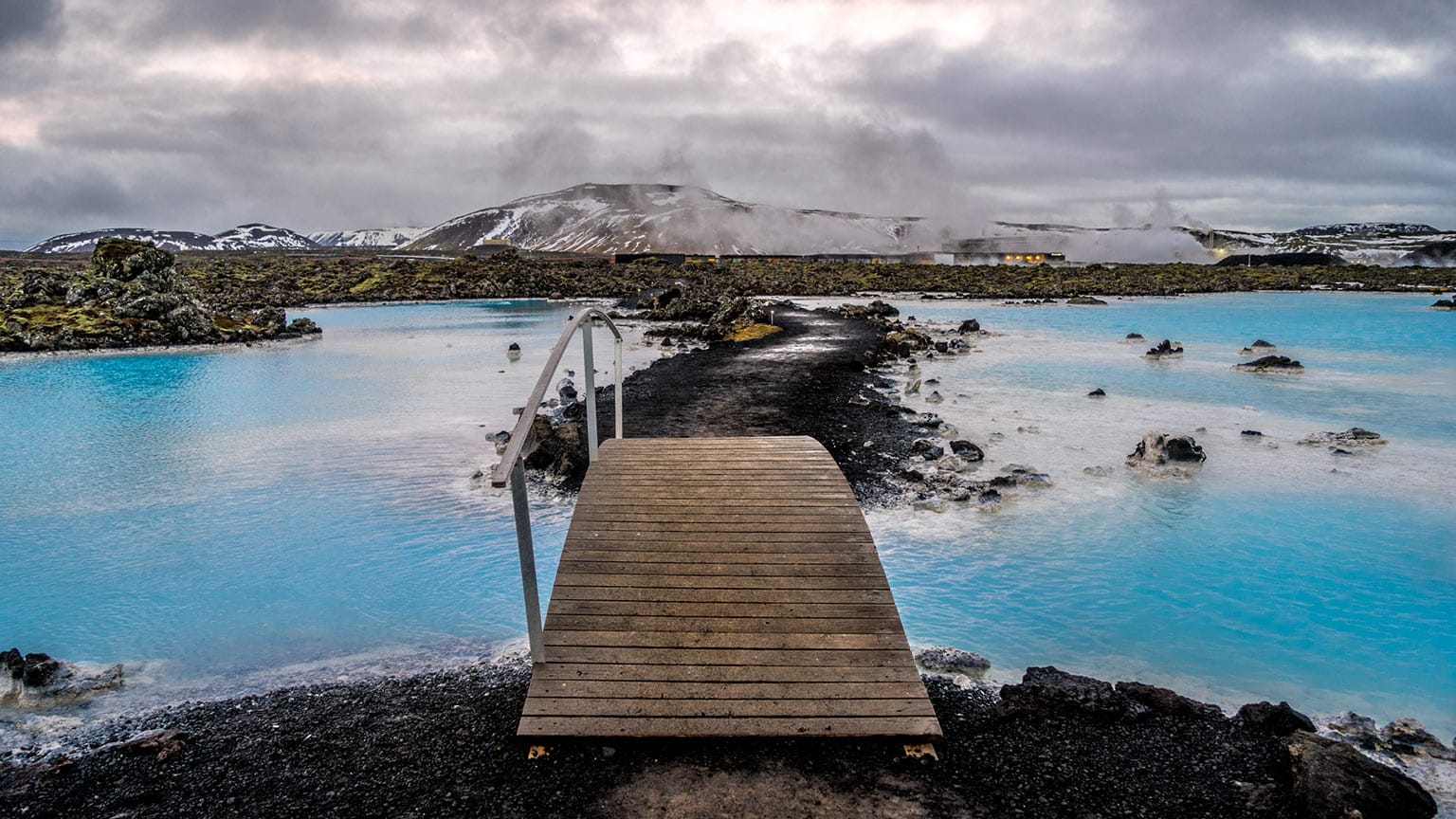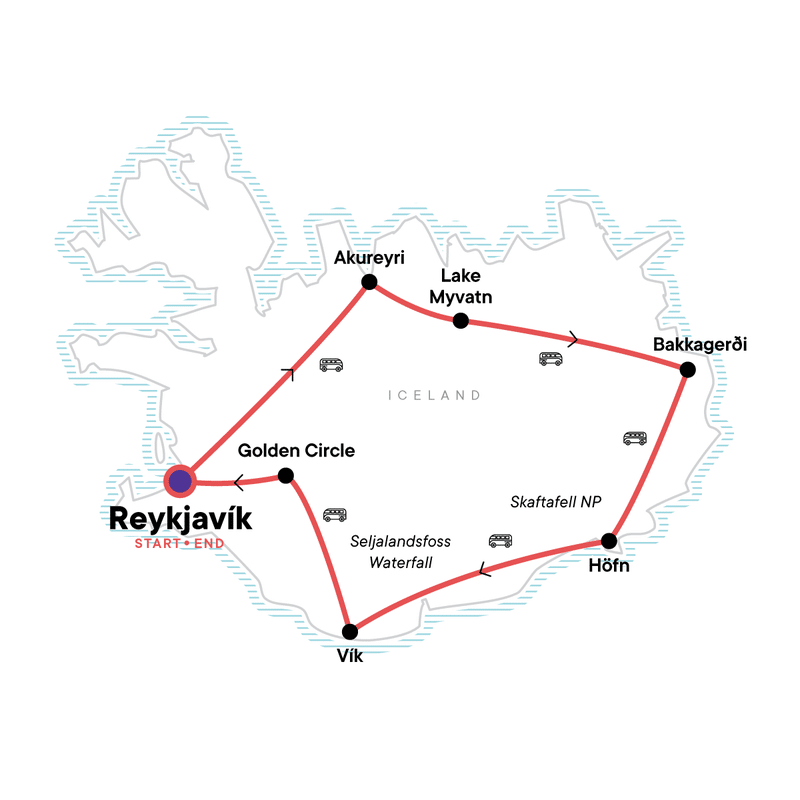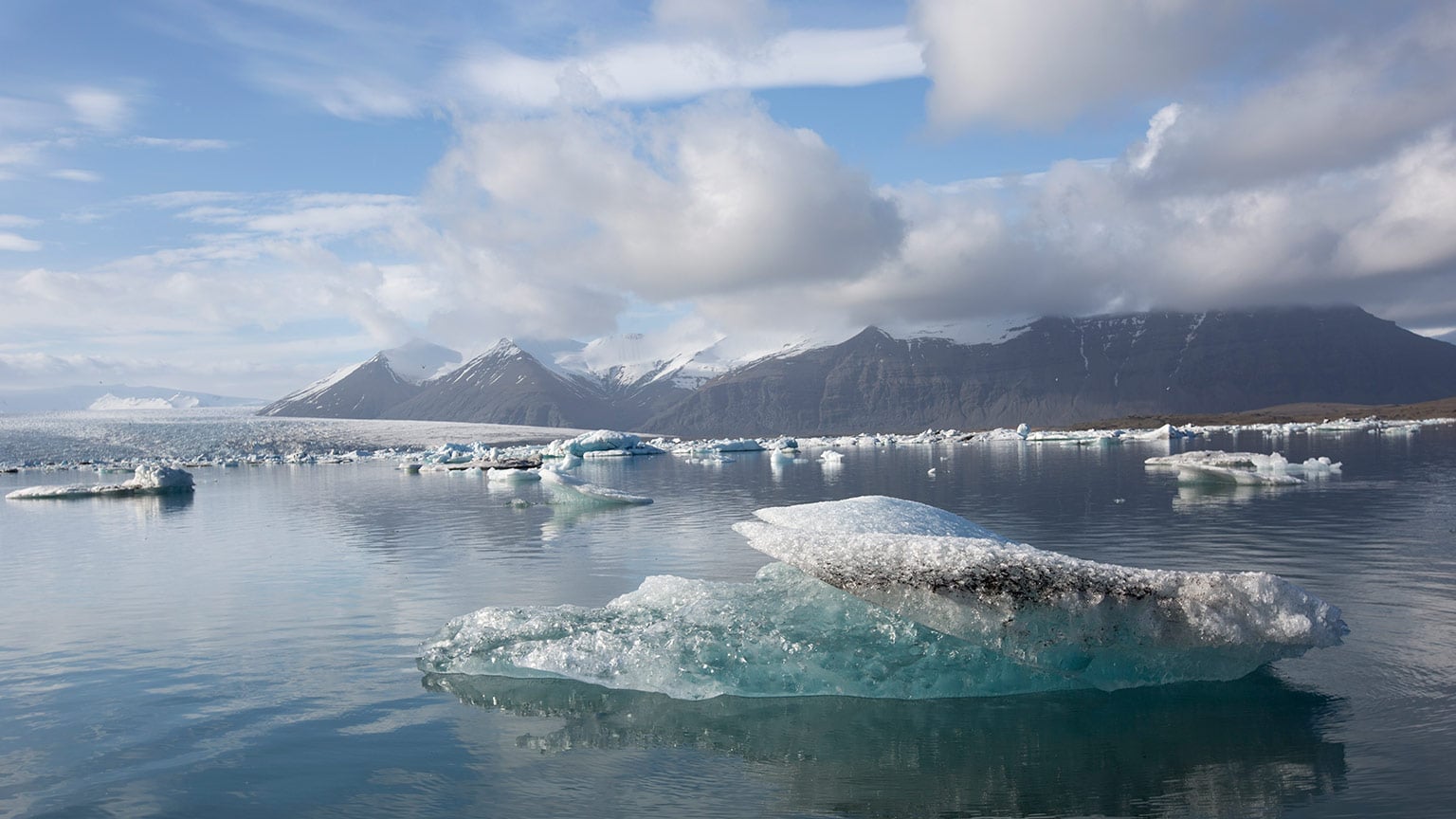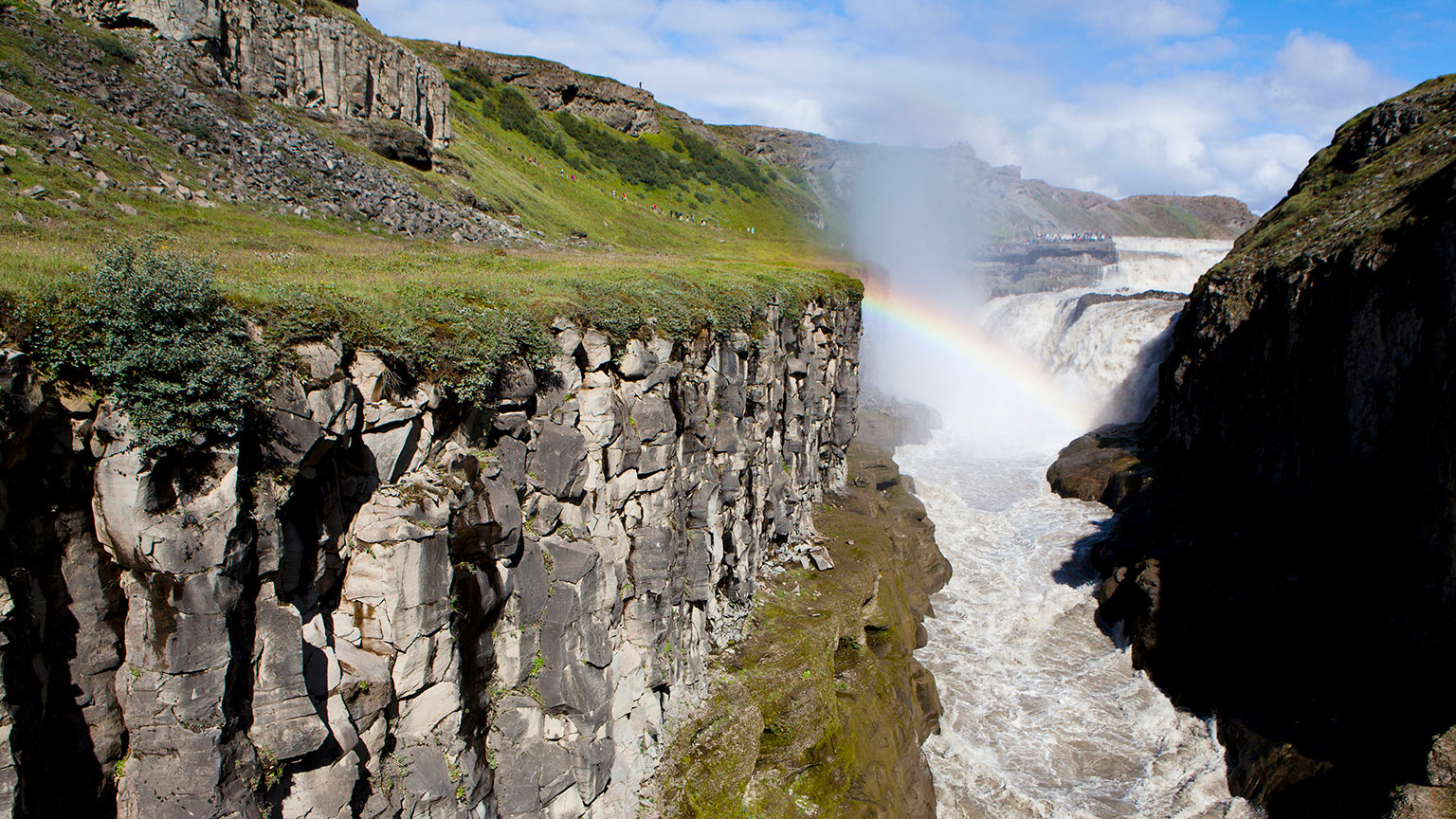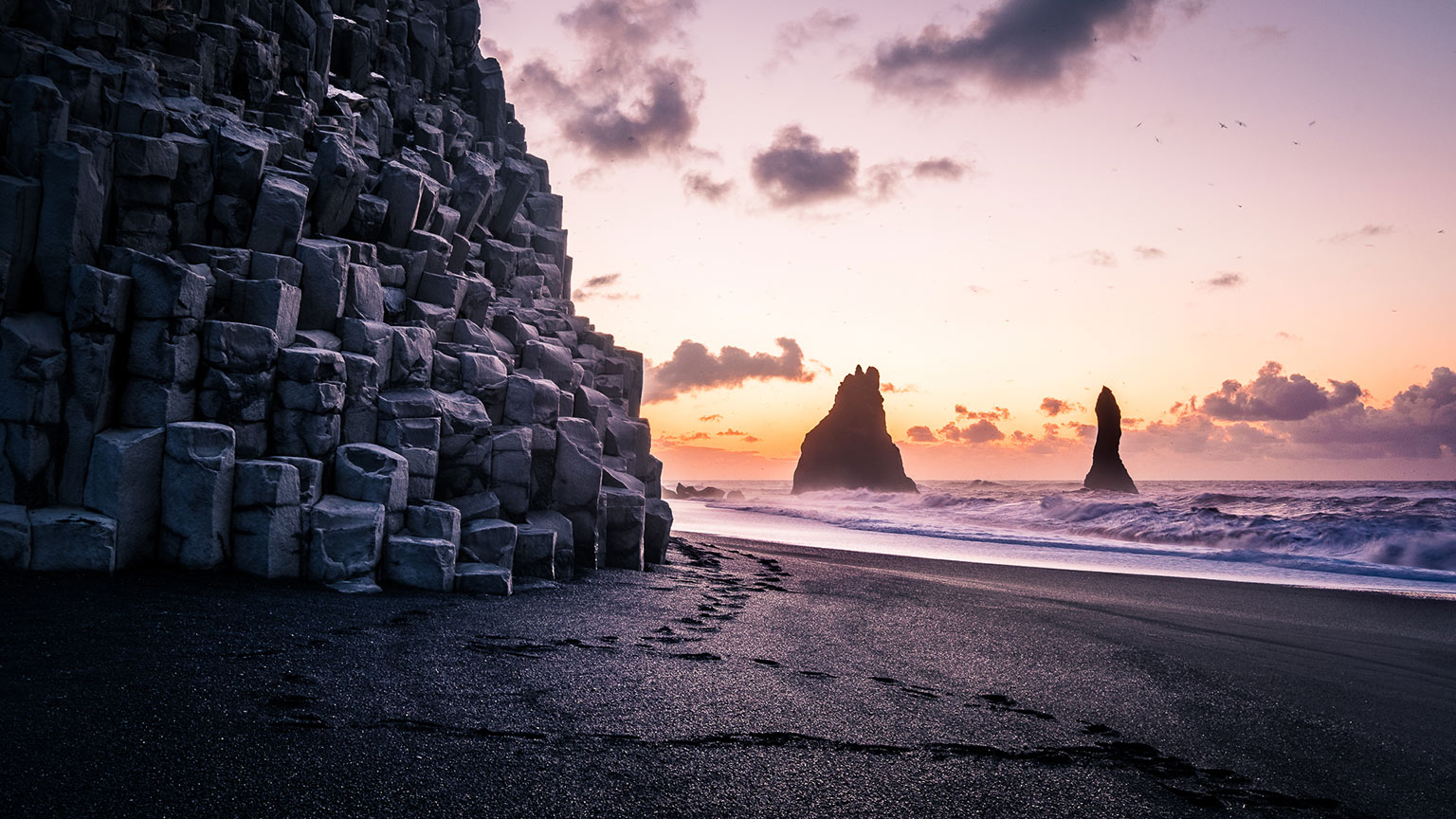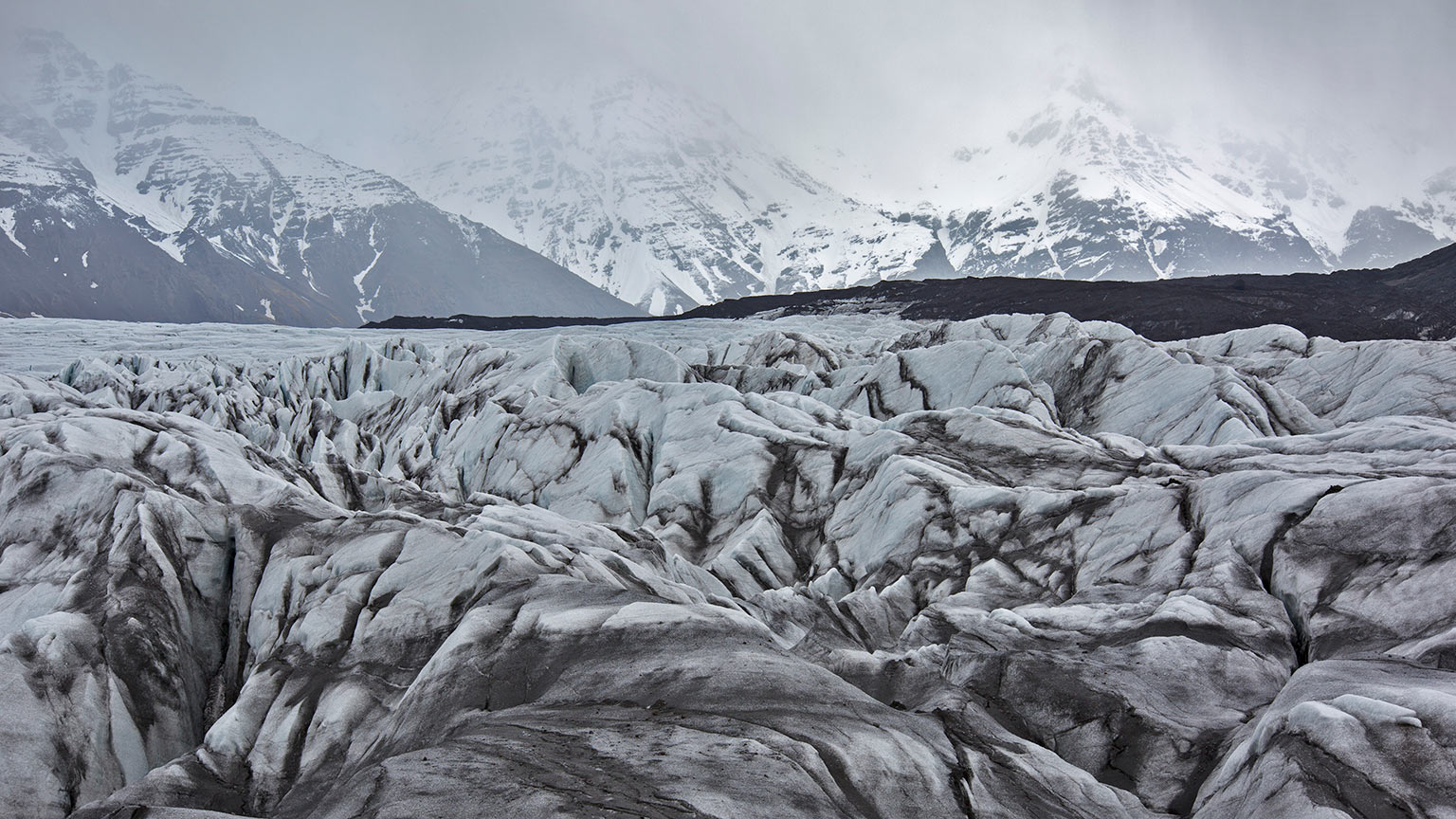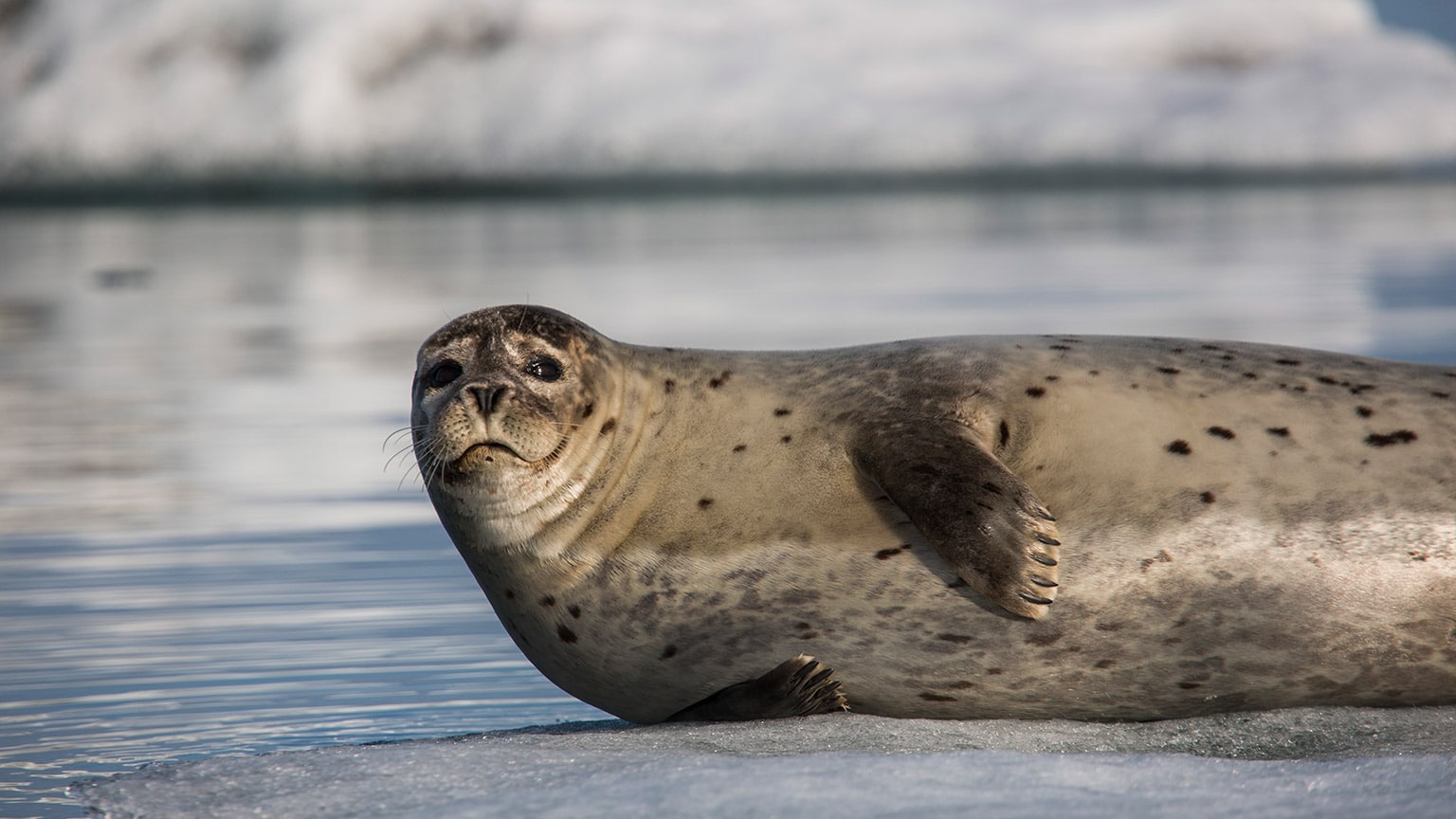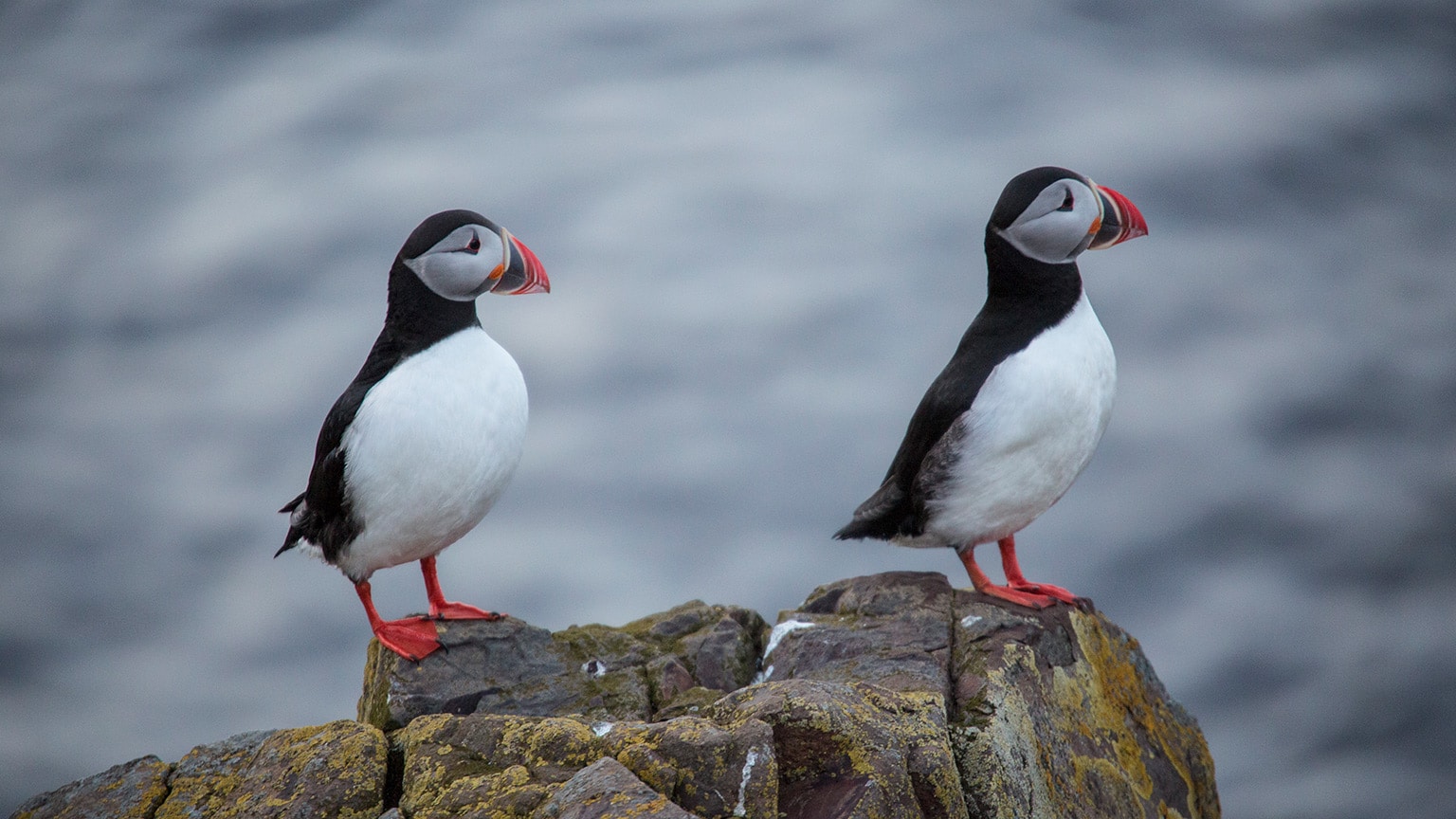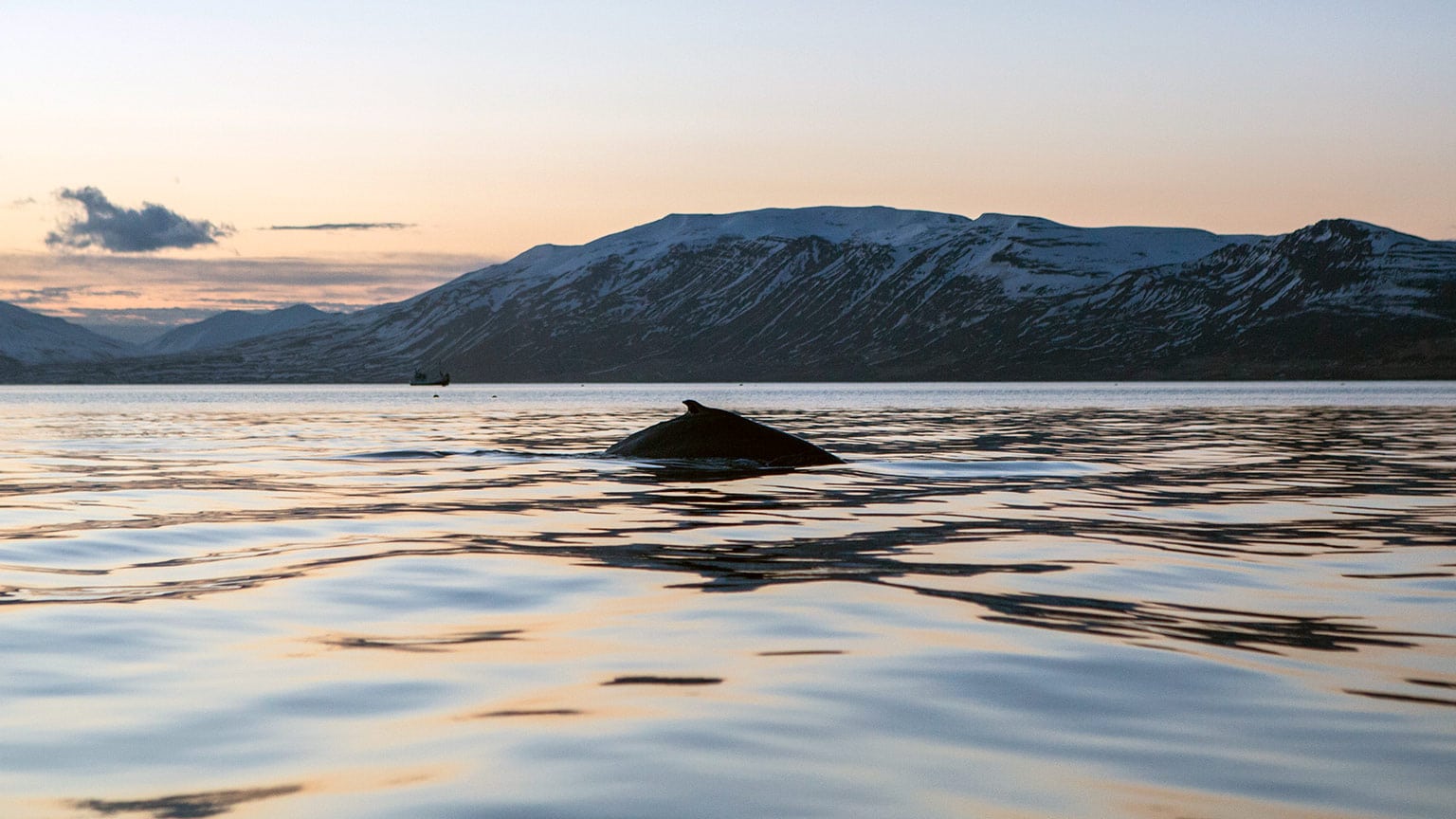Details
Frequently Asked Questions
Please read our general
FAQs, where you can find essential information that applies to all of our programs.
Resources to Learn & Teach about Iceland
Visit our
recommended reading page to see the list of books GEEO recommends reading before your program (this is not required reading). We also have
lesson plans and
Pinterest boards that may be useful for you as you learn about your destination and prepare to bring lessons back to your classroom.
Terms and Conditions
It is very important for you to visit our
Terms and Conditions page before signing up for this program.
GEEO Program Confirmation Process
Most GEEO programs are officially confirmed to run once 4 participants have registered. If at least 8 people sign up by our designated deadline, the program will run as a private GEEO trip. Should enrollment fall between 4 and 8, the trip will still take place, but it may transition into a
shared departure with our partner tour operator, G Adventures. In this scenario, the itinerary, dates, and pricing for those who have already registered will remain unchanged, although additional travelers from outside GEEO may join the trip.
A large majority of GEEO programs remain private for just educators, retired educators, and their guests. We encourage you to sign up for any program that interests you, and we’ll keep you updated throughout the process—first when 4 participants have registered and again once 8 people have signed up. As always, we recommend exercising caution when making non-refundable travel arrangements (for example, booking flights with flexible change or cancellation policies) until your program is confirmed to run.
Cancellation Policy
All cancellations must be submitted to GEEO in written form by emailing your request for cancellation to
travel@geeo.org. If you do not receive a confirmation that we have received your written cancellation request, please call us at +1 347-433-6674. Verbal cancellation requests will not be honored.
- If you cancel 60 days or more prior to the start of your program, all payments will be refunded excluding your $350 deposit, which is kept on file for future use and never expires. (Exception for participants who receive grants from our university partners: To address disruption caused by cancellation from grant recipients, deposits paid by grant recipients are forfeited upon cancellation.)
- If you cancel between 30 and 59 days prior to the start of your program, you will receive a 50% refund and your deposit will be kept on file for future use and will never expire.
- If you cancel within 30 days prior to the start of your program, you will receive no refund, but your deposit will be kept on file for future use and will never expire.
Trip Notes & Expectations
Before you decide to travel with GEEO, it is important that you read all of the information about the program contained on this page. Our programs are quite adventurous, and we find that clients who read the trip details in full are happier with their experiences.
- ACCOMMODATION: Our program fees are based on double-occupancy accommodation (see "Single Travelers" below if you do not have a travel companion and would be interested in a private room). Our accommodations are chosen to provide a safe, conveniently located place to sleep. While you may be pleasantly surprised, please don't expect luxury, as we prioritize keeping our programs affordable.
Important: Single room accommodations in European hotels are often smaller, and may not be to the same service level as double-occupancy rooms.
- ACTIVITY LEVEL: This trip includes light walking and optional moderate hiking that is suitable for most fitness levels. Make sure you have thoroughly read the itinerary and can handle the group activities, which sometimes include day hikes with your daypacks. Please note that this is a very busy tour, and there are some long drive days. We recommend always carrying snacks with you. Meals can sometimes be far apart.
- BLUE LAGOON: If you wish to visit the Blue Lagoon, please know that this activity must be done before or after your tour. As this activity is very popular and limits admission, we recommend booking it online well in advance.
- MONEY: Credit Cards (Mastercard and Visa only) or NFC mobile tap-to-pay are the preferred form of payment. You can use USD for tips. You don't really need to take out much Icelandic Krona as you can use your card or phone for nearly everything. Make sure your credit card does not charge an international transaction fee. If you do not have a card without international transaction fees, we recommend getting a new card. Capital One cards do not charge international transaction fees.
- WEATHER: The landscape of Iceland is unique and unlike most things you’ve seen. So is the weather. It is unpredictable and changeable, so be prepared to experience a variety of conditions during your time in Iceland. It’s not uncommon to experience rain, sun, wind, and snow all in the same visit, so please pack accordingly. An Icelandic summer is also not what most people consider as summer temperature, and in the highlands it can get quite cold.
- GROUP LEADER: Please make sure you understand the role of your tour leader on this trip. All GEEO/G Adventures group trips are accompanied by one of G Adventure’s group leaders, which they refer to as Chief Experience Officers (CEOs). The aim of the group leader is to take the hassle out of your travels and to help you have the best trip possible. They will provide information on the places you are traveling through, offer suggestions for things to do and see, recommend great local eating venues, and introduce you to our local friends. Our itineraries often have plenty of free time to explore on your own. While not being guides in the traditional sense, you can expect them to have a broad general knowledge of the countries visited on the trip, including historical, cultural, religious, and social aspects. We also use local guides where we think more specific knowledge will add to the enjoyment of the places we are visiting – we think it’s the best of both worlds.
Single Travelers
Half of GEEO’s participants travel by themselves, so please don’t worry if you do not have a travel companion for your trip. Our program fee is for one traveler in double-occupancy accommodation, and GEEO can find you a roommate of the same gender if you do not have a travel companion. Most of our programs have a “My Own Room” option, also known as a “Single Supplement,” which is an extra fee that you can pay to have a room to yourself. You will only incur an additional charge if you specifically request a single room.
Accommodation Note 1: If the start or finish accommodation for your trip is Hotel Cabin (Reykjavík), Standard rooms will be booked for Single occupancy only (including My Own Room) and Superior rooms will be booked for Twin/Double occupancy. This information also relates to any Pre/Post night bookings at Hotel Cabin.
Accommodation Note 2: If you have booked the "My Own Room" option for this tour, you will receive your own single accommodation for all night stops, with the following exceptions: Night 2 and night 3 at the guest house.
To see the price for the “My Own Room” option, please find your program on our
extra services page. If you want to room alone, please email
travel@geeo.org to request a single room.
Emergency Contacts
Should you need to contact G Adventures during a situation of dire need, it is best to first call their local G Adventures office. If for any reason you do not receive an immediate answer, please leave a detailed message and contact information so they may return your call and assist you as soon as possible.
EMERGENCY CONTACT NUMBERS
G Adventures Berlin office: +44 185 837 8000
If you are unable for any reason to contact the local office, please call the numbers listed below, which will connect you directly with the 24-hour Sales team, who will happily assist you.
Toll-free, North America only: 1 888 800 4100
Calls from UK: 0344 272 0000
Calls from Germany: 0800 365 1000
Calls from Australia: 1300 796 618
Calls from New Zealand: 0800 333 307
Outside North America, Australia, New Zealand, Germany and the UK: +1 416 260 0999
Packing List
Please read this article on GEEO’s blog for our staff’s suggestions on the best gear to pack for your upcoming travels. You must be prepared to carry your own bags and be comfortable carrying them up and down stairs, on and off transportation, and to hotels. As a rule, we try not to have to walk more than 15-20 minutes with your bags, which is why we recommend keeping the weight of your bags between 22-30 lb. Most travelers carry a backpack or rolling bag of small to medium size. No XXL bags please! A daypack is also essential for carrying everyday items. Space is limited on transportation, so there is a limit of one main piece of luggage per person plus a daypack per person.
Suggested (click to expand)
- Rain coat or waterproof shell jacket
- Warm fleece top
- Personal clothing for cool weather in the 40’s-60’s F – we recommend packing 6 outfits as you can't do laundry.
- Wool socks
- Synthetic travel pants (jeans do not dry as quickly)
- Very supportive, water-resistant walking shoes
- Daypack
- Sunblock
- Sunglasses
- Sun hat
- Refillable water bottle (the water in Iceland is great!)
- Toiletries
- Camera (or use your phone)
- Insect repellent
- First-aid kit, including: lip salve, aspirin, bandaids, anti-histamine, Dramamine, Imodium or similar tablets for mild cases of diarrhea, electrolyte powder, insect repellent, extra prescription drugs you may be taking
- Snacks – packing a dozen granola/protein bars is a good idea; you can buy snacks when you get there too, but Iceland is pretty expensive.
Optional (click to expand)
- Swimsuit
- Eye mask (the hotels typically had really effective blackout curtains)
- Waterproof pants for over regular pants (Not really necessary unless you want to get really close to the waterfalls
- Wool hiking socks
- High ankle top sturdy hiking boots for glacier hike (You can rent for glacier hike for $8.00)
- Long john (thermal underwear) top for layering
- Travel pillow
- Light weight silk sleep sheet
- Money belt
- Phone/tablet for internet – most hotels have WiFi
- Chargers for electronics as well as converters/adapters, if needed
- AirTags or Tile trackers
- Packing cubes
- Shower cap - showerheads come straight down
- Ziplock bag with a few plastic forks & spoons (numerous lunches grocery stores)
- Earplugs
- Towel for hair and lagoon - only 1 body and hand towel provided in hotels
- Ziplock bags
- Reading/writing material
- Hand sanitizer/baby wipes
- Hairdryer - not always available
- Gloves for when you are on the glacier
Documents (click to expand)
- Passport (with photocopies)
- Any entry visas or vaccination certificates required
- Travel insurance ID card
- Flight itinerary/boarding pass(es)
- USD/EUR cash
- Credit/debit card
- G Adventures vouchers
- GEEO Classroom action plans for your group – this is sent a few days before departure
Laundry
We recommend bringing enough clothes so you don't have to do laundry during the trip. You won't be sweating much, so it should be pretty easy. Laundry facilities are offered by some of our hotels for a charge. You can also use a local laundromat, if necessary.
Passports and Visas
All GEEO programs require the participant to have a valid passport. Please see our general
FAQ for information on obtaining a passport. As with all of our trips, we try to provide the most accurate information we can, but governments sometimes change visa rules. It is your responsibility to double check the information we provide below by searching
the U.S. State Department's International Travel Guidance.
PASSPORT
In Europe's
Schengen area, your passport must be valid for at least six months beyond your date of entry. At present, the Schengen area includes most European Union (EU) countries, except for Cyprus and Ireland.
VISA
Currently, U.S. citizens can enter Schengen Area Countries visa-free for up to 90 days. The
European Travel Information and Authorization System (ETIAS), which approves entry for short-term stays into the European Union for visa-exempt visitors, was expected to go into effect in 2022 but has been continually delayed and is not scheduled to be implemented until late 2026. No action is required from travelers at this point, and the EU will announce a start date for ETIAS several months prior to its launch. If this changes and ETIAS will affect your trip, GEEO will let you know, and you will need to apply online and pay €7 for a travel authorization (see more
here).
Money Exchange
The local currency in Iceland is the Icelandic krona (ISK). As currency exchange rates fluctuate, we ask that you refer to the following website for daily exchange rates: www.xe.com.
We recommend that you obtain cash from ATMs while traveling; they will dispense the local currency. We do, however, recommend that you bring at least $200 USD in cash for emergency use or in case you have trouble with the ATMs. Major credit cards are accepted in most shops, but you may be charged an international transaction fee; ask your financial institution about their international fees. Please note that if you are carrying U.S. dollars, the bills should be in good condition (i.e., not torn, wrinkled, or marked on in any way) and dated recently.
Tipping
It is customary to leave a small tip for service providers, such as waiters, if you are pleased with the service. Tipping is an expected, though not compulsory, component of this program and an expression of satisfaction with the people who assist you on your trip. Although it may not be customary to you, it is of considerable significance to the people who will take care of you during your travels.
There will be opportunities during the trip to tip your local guides or drivers. You may do this individually, or your tour leader may offer to collect the money and give a tip on behalf of the group. Ask your tour leader for specific recommendations based on the circumstances and expectations. Also, at the end of your program, if you felt your G Adventures tour leader did an outstanding job, a tip would be appreciated. Tipping amounts are entirely your personal preference, but as a guideline:
- Service providers/Waiters: 10% of the bill
- Local guides and drivers: €3-5 EUR (450-750 ISK) per person per day
- Tour Guide (CEO): €30-40 EUR (4,500-6,000 ISK) per person per week
Flights
We find the best prices for flights are often available around 90-120 days before departure, but of course this varies greatly from route to route and year to year.
You should wait until this trip is confirmed before you book non-refundable flights. GEEO and G Adventures bear no responsibility for any flights purchased before the trip is confirmed.
This program begins and ends in Reykjavík. Please double-check our itinerary for the date by which you must arrive in Reykjavík. You may want to arrive in Iceland one or more days early in case you have flight disruptions. You can arrive at any time you choose, but try to make it in time for our 6:00 p.m. Welcome Meeting on Day 1. You can depart from Reykjavík any time on the final day of the program, or stay later to see more of the city.
Plugs and Converters
There are two components to provide external power to your device: adapters and transformers (also called electrical converters). The adapter is for your device's plug, adapting the prongs on a standard U.S. two- to three-pronged power cord to fit the local outlets. The transformer/converter changes the local voltage to the voltage used in the U.S.
Iceland has type C outlets for two circular prongs, and the voltage is 220-240V. (Standard U.S. electrical outlets are 120V.) Most new devices, including phones and laptops, are made to work with the different voltage rates, but some devices, like hair dryers, may only work on the U.S. standard of 120V. Check your device's plug or manual to see what voltage range it requires. Most transformer blocks will have an “Input” line that defines its voltage capacity; for example, “Input: 100-240V” means that it will work with voltages between 100V to 240V. If your device can’t handle the higher voltage, you’ll need to purchase a transformer/converter. You can find world transformers/converters online or at many retail stores in the travel section.
Weather
The weather is cool during the day, mostly in the 50’s F or low 60s' and cold at night, mostly in the 40’s F. It does rain fairly often in Iceland. You will be so far north that the sun will stay above the horizon for around 19-22 hours a day.
🗣️ Advice From Past Participants
“I’m glad I came 5 days before the trip, because the jet lag from SF in addition to the 20+ hours of sunlight threw me for a loop. I know a couple of the teachers didn’t bring eye masks for sleeping in, and for me this was a necessity; not all hotels have sufficient black-out curtains.”
“They say if you don’t like the weather, wait 5 min., and that is so true! Prepare to bring layers: A warm jacket, a rain jacket, and a fleece/hoodie. Gloves are only helpful on the glacier day, and they can be rented. Waterproof pants would have been nice a couple of days.”
“Food prices in more isolated areas can cause sticker shock.”
“Gas stations are really like 7-Elevens with fairly large dining rooms included.”
“Need to stress that gloves, and warm socks needed for the glacier hike. Also, may need to rent the hiking boots for the glacier hike.”
“Eating is expensive. Waterproof pants were taken but not needed. Be prepared for long days, with dinner coming before hotel stops.”

